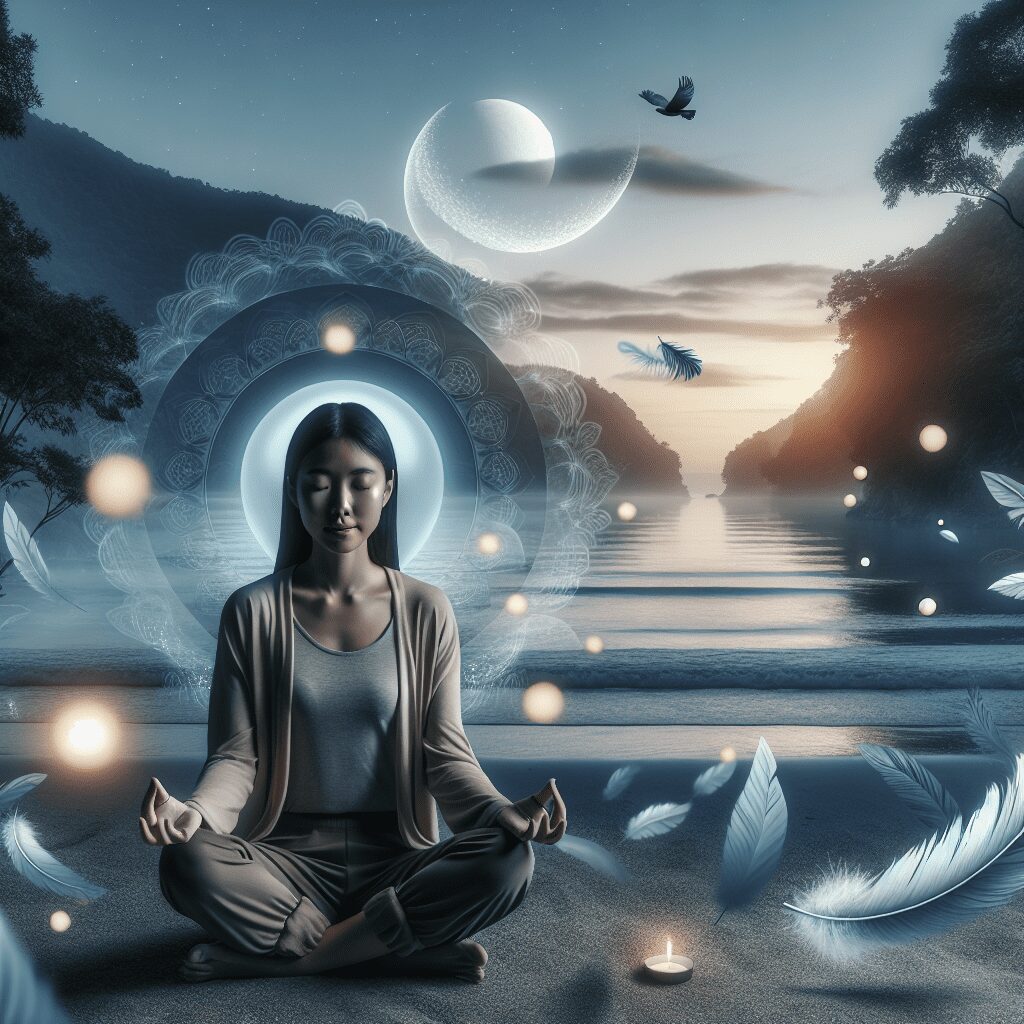
Prioritize your mental well-being daily. Enhance your life by nurturing your mental health with the Smart Meditation app. Break free from stress, alleviate anxiety, and enhance your sleep quality starting today.
Scrying Bowl Used In Meditation?
Discover the Depths of Reflection: The Scrying Bowl in Meditation Practices
Amid the myriad tools and techniques employed in the expansive world of meditation, the scrying bowl emerges as a uniquely captivating instrument, merging the ancient art of divination with the tranquility of meditation. This mystical practice, often shrouded in the aura of mystery, uses a simple bowl filled with water as a gateway to deeper realms of consciousness, offering a blend of introspection and prophetic insights. Let’s delve into how incorporating a scrying bowl into your meditation routine can enhance your mental clarity and unlock new avenues of self-discovery.
The Essence of Scrying in Meditation
At its core, scrying is an old-school technique of looking into a reflective surface — think crystal balls, mirrors, or, in this case, water surfaces — to tap into the subconscious mind and perceive hidden truths or future events. It’s like having a psychic chat, only the medium of communication is your own mind, reflected through the ripples of water.
How to Set Sail on Your Scrying Journey
-
Choosing the Right Vessel: First things first, snag a bowl that speaks to you. It could be anything from a rustic, handmade clay bowl to a sleek, reflective glass basin. What matters is that it feels right. The bowl’s material and color can influence your meditation, so choose wisely!
-
Setting the Scene: Ambiance is key. Find a quiet, dimly lit space where you won’t be disturbed. Candles and incense? Sure, why not! They can enhance the mood and help you slip into a meditative state more easily.
-
Water Ritual: Fill your bowl with clear water. This act is symbolic, representing clarity of thought and purity of intention. Some folks like to add a few drops of essential oil or flower petals to the water, charging it with their energy.
-
The Meditation Begins: Get comfy and relax. Gaze into the water, allowing your focus to soften. Breathe deeply and let your thoughts drift like leaves on a stream. The goal here is not to force any visions but to let your mind wander freely.
-
Interpreting What You See: This part is more art than science. Images, colors, or patterns may emerge. They could be literal or symbolic, clear or cryptic. Trust your intuition to guide your interpretation. Jot down any impressions or messages you receive. Reflecting on these insights after your session can uncover deeper meanings and revelations.
Benefits Beyond the Bowl
Integrating scrying into your meditation practice isn’t just about seeking glimpses of the future or unraveling mysteries. It’s a profound exercise in mindfulness, concentration, and self-reflection.
-
Enhanced Intuition: Regularly engaging in scrying can fine-tune your intuition, making you more in tune with your inner wisdom and the subtle cues of your environment.
-
Stress Reduction: Like any form of meditation, scrying can be a potent antidote to stress. It encourages deep relaxation and mental clarity, helping you to detach from the humdrum of daily worries.
-
Creative Spark: By opening the floodgates of your subconscious, scrying can be a source of inspiration, sparking creativity and unlocking imaginative solutions to problems.
A Portal to Your Inner Universe
At the end of the day, a scrying bowl in meditation is not just about peering into the future. It’s about peering into oneself. The real magic lies not in the bowl or the water but in your own mind’s ability to transcend the ordinary, venture beyond the surface, and explore the depths of your soul.
So, are you ready to dive in? Remember, the journey within is the most thrilling exploration of all. Grab that bowl and let the waters guide you to unseen shores of your consciousness. Who knows what wonders you might discover?





